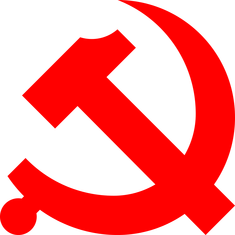
Chinese History 101 #10: Communist China
First published: Sunday August 15th, 2021
Report this blog
From where we left off
I went through the history of the Second Sino-Japanese War (i.e. World War II) in my previous blog. In this blog, I continue on Modern Chinese history from 1945 onwards, starting from the civil war between the Nationalist (Kuomintang or KMT) and the Communist (CCP).

Chinese Civil War (1945 - 1949)
After the Japanese surrender, the Soviet controlled Manchuria and Inner Mongolia. Although the Soviet promised to return them to the Chinese Nationalist government in exchange for its recognition of Mongolian independence, they secretly supported the Chinese Communists and transferred weapons to them, while stripping off all industrial assets from Manchuria and brought back to the Soviet Union.
Soon after the war, peace negotiation between the KMT and CCP started and they reached a peace agreement on power sharing in October 1945. However there was deep mistrust between the two sides and neither side would compromise, and by 1946, civil war had erupted while negotiations continued.
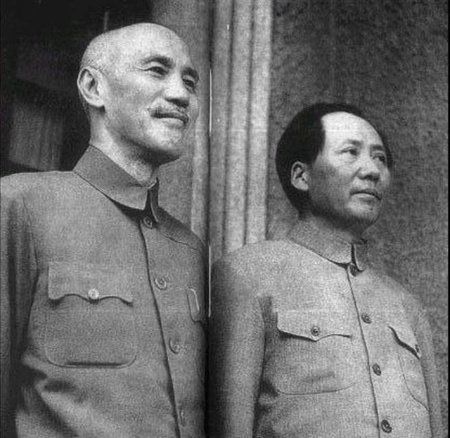
The CCP received military hardware left over by the Soviet and took over the Northeast once the Soviet left. They promised land reform and quickly gained support from the massive number of landless and starving peasants to join their fight against the KMT. In March 1947, negotiation between the KMT and CCP completely broke down and full-scale war resumed. The KMT achieved symbolic victory in capturing the CCP capital Yan'an, but Mao adopted "Mobile Warfare" by retreating and launching counterattacks soon afterwards.
By late 1948, the CCP captured Shenyang and Changchun in the decisive Liaoshen campaign, with a brutal six-month siege of Changchun causing 150,000 civilian deaths from starvation, and completely wiping out KMT's best army. The CCP also had victories in Huaihai campaign in eastern China and Pingjin campaign in Beiping (now Beijing) and Tianjin, controlling vast areas north of Yangtze River (dark red area in the map below).
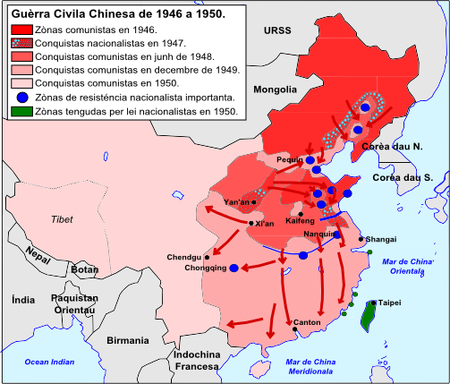
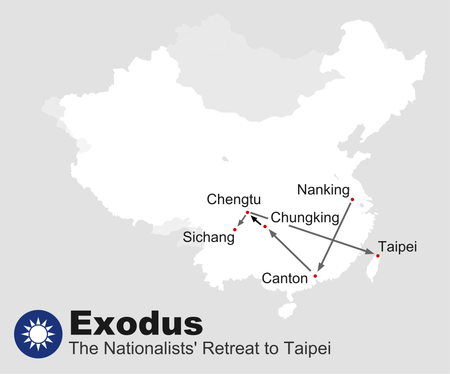
After the three successful campaigns, the CCP issued an ultimatum to the KMT in the final ceasefire negotiation in Beiping in April 1949. When the KMT rejected the ceasefire agreement, the CCP launched the Yangtze River Crossing campaign, taking over the capital Nanjing on 23 April and forcing the KMT government to retreat to Guangzhou, Chongqing, Chengdu and finally Taipei.
People's Republic of China - Mao era (1949 - 1976)
On 1 October 1949, Mao Zedong proclaimed the founding of the People's Republic of China in Tiananmen Square, Beijing, restoring it as the nation's capital and with a new flag and national anthem.
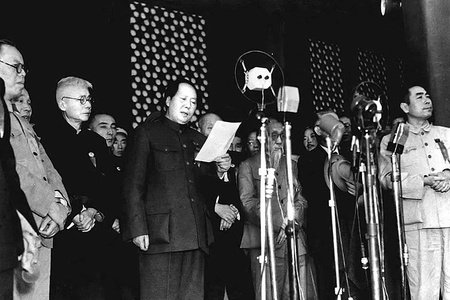
Soon after its founding, the country was drawn into the Korean War in October 1950 when the US-led UN forces fought back against the North Korean invasion, took over Pyongyang and approaching the Chinese border. Rather than formally declaring war against the US, the CCP sent in the so-called People's Volunteer Army in what is known as the Resist America, Aid Korea campaign in China. Although poorly equipped and lack of modern military technology, the Chinese army was hardened by years of wars against the Japanese and KMT, and outnumbered the UN forces. It successfully drove the UN forces south of the 38-parallel, albeit suffering huge casualties with estimated 400,000 killed out of 3 million deployed, including the death of Mao Zedong's son Mao Anying.

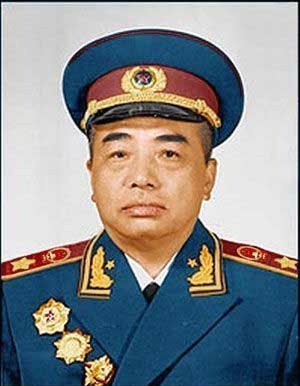
After the Korean War in 1953, Mao tackled inequality through land reform program, persecuting over a million landlords and redistributing land to the poor and landless peasants. Post-war reconstruction was completely relied on the Soviet Union and the Communist bloc, which provided much economic aids and trainings in the 1950s. Its foreign policy also leaned one-sidedly towards to Communist bloc and against the capitalist led by the United States.
In 1957, Mao launched the Hundred Flowers Campaign as a way of furthering socialist ideology through open debate, but many took it as an invitation to express open disdain for the Communist Party. Thoroughly shocked, Mao put an end to it in the Anti-Rightist Campaign by purging political opponents, intellectuals and anyone deemed a "Rightist". It was estimated that up to 2 million people were executed, jailed or "disappeared" during the purge.
By late 1950s, the relationship between China and the Soviet Union turned sour. In 1956, the Soviet leader Nikita Khrushchev denounced Stalin and Stalinism. The ideological differences between the Soviet and Chinese in their interpretation of Marxism-Leninism, and Khrushchev's suggestion on a joint Sino-Soviet fleet and stationing troops in China against the US angered Mao. The relationship deteriorated rapidly and by 1960, the Soviet completely withdrew all aids and personnel from China, leaving many construction projects dormant.
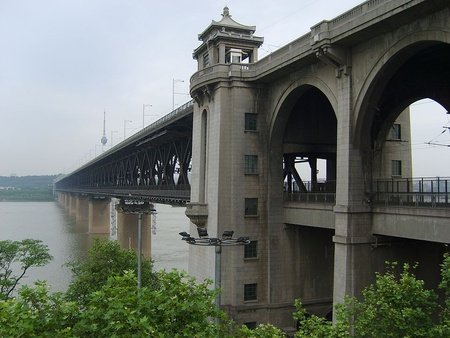
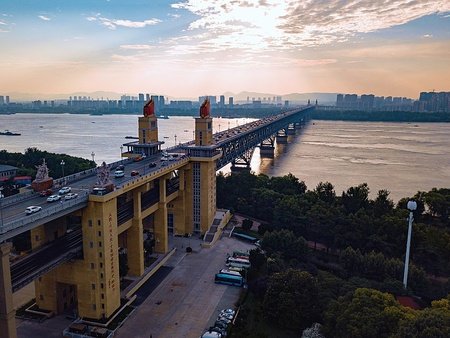
Under Mao's leadership, China broke with the Soviet model and launched a new economic program called the Great Leap Forward in 1958, aiming to accelerate agricultural and industrial outputs with a target to "exceed the UK and catching the US" in 15 and 50 years respectively. Experimental People's communes were set up, whereby villagers were gathered into collective units of production brigades, working for the state, living together and eating for free. An emphasis on steel production led to illiterate peasants and workers setting up backyard furnaces, trying to make steel from scrap metal but ended up producing worthless pig iron. Competition on agricultural outputs were encouraged between different villages and provinces, with unrealistic production yield targets. In fact, commune workers worked all day and night on a single field to produce the highest yield and vastly exaggerated food production figures, while neglected the rest of the farm land and harvest. In an effort to increase production, pests including sparrows were eliminated, which led to ecological disaster and a devastating locust plague. Together with millions of peasants diverted to steel production, these caused the Great Chinese Famine between 1959 to 1961. It is widely regarded as the worst man-made disaster in human history, with an estimate of 15 to 55 million died of starvation.
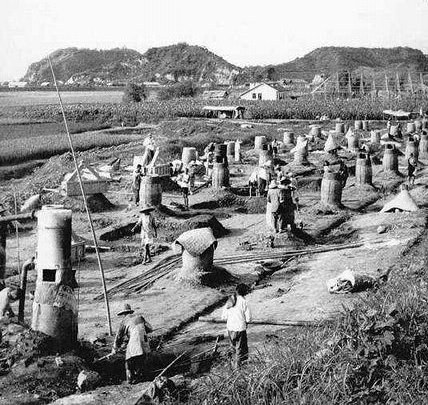
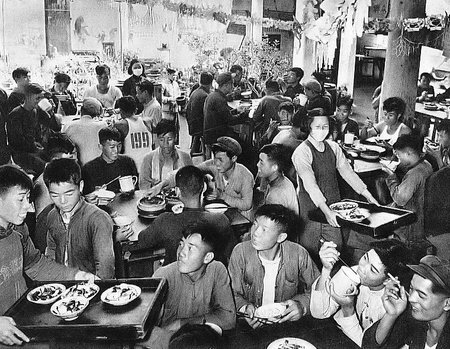
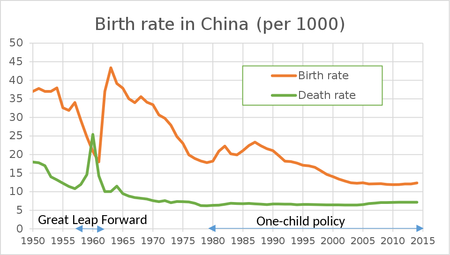
One of the most vocal opponents was the Defence Minister Peng Dehuai, who was horrified at the wreckage of the Great Leap Forward and blamed Mao for the disasters. He was in turn denounced as a rightist and removed from office in disgrace in 1959. It was not until 1962 that Mao Zedong made self-criticism and took a semi-retire role, leaving the responsibility to President Liu Shaoqi, Party General Secretary Deng Xiaoping and Premier Zhou Enlai.
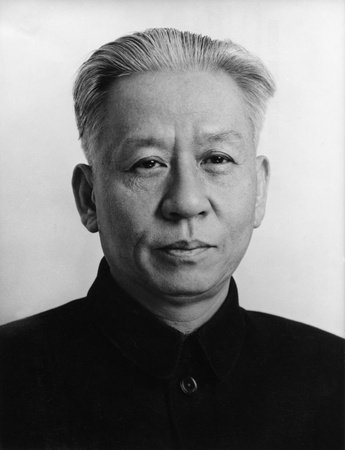
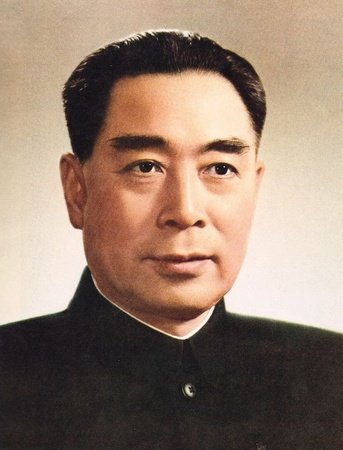
The three men returned the CCP to democratic centralism, adopted pragmatic economic policies and disbanded the communes. Major progress was made in the "Two Bombs, One Satellite" program, referring to the atomic (and later hydrogen) bomb, intercontinental ballistic missile and artificial satellite. China tested its first atomic bomb in 1964, first hydrogen bomb in 1967, first surface-to-surface missile in 1966, and launched its first satellite in 1970.
These events took the West and Taiwan by surprise, especially since the Sino-Soviet split in the late 1950s. They underestimated the Chinese capability to develop a nuclear weapon on their own. With the nuclear weapon in hand, the chance of the KMT recapturing mainland China became remote, and international community would have to shift its recognition to the mainland, with the United Nations recognising the People's Republic of China and removing the Republic of China in 1971.
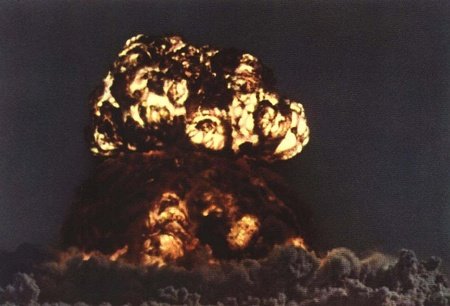
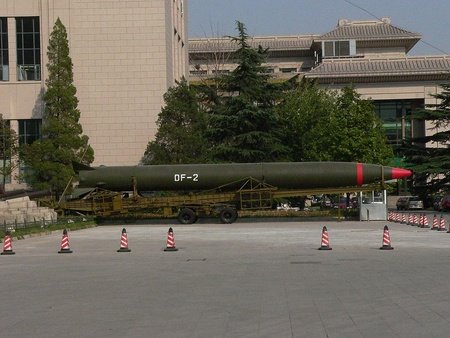
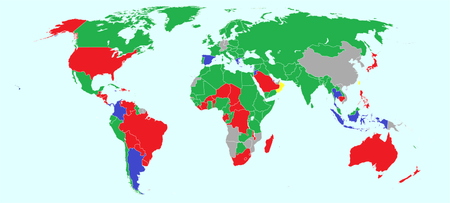
Meanwhile, Mao Zedong became increasingly annoyed and dissatisfied with China's new direction and his own reduced authority. He began a drive to regain power in 1963 when he launched the Socialist Education Movement, a precursor to the Cultural Revolution in 1966. In an attempt to return to the centre of power and eliminate his rivals, Mao mobilised millions of young people and proletariat (the "Red Guards") in a class struggle against the "liberal bourgeoisie" and "capitalist roaders", claiming that these dangerous elements were present within the government.
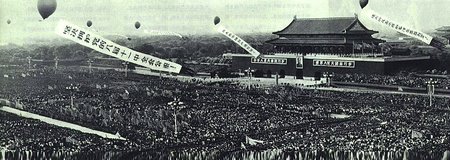
These Red Guards were issued with the Little Red Books (Mao's quotations), which called upon them to take charge and grab power against the capitalists, revisionists and counter-revolutionaries. A university student posted a "big-character poster" (a handwritten protest/propaganda poster on campus noticeboard) attacking the university party's establishment. Mao endorsed the poster, which had a ripple effect as students everywhere began revolt against their schools and teachers, and all classes were suspended. Mao responded by writing his own big-character poster, inciting students to bombard the headquarters, which was interpreted as an indictment of the party establishment led by Liu Shaoqi and Deng Xiaoping. Liu and Deng were side-lined from day-to-day party affairs, and Mao's designated successor Lin Biao was elevated to the vice-president.
In October 1966, Deng was stripped of his party membership and labelled a revisionist and a capitalist roader. He wrote a self-criticism and was banished to the countryside. Liu was far less lucky. Mao and his wife Jiang Qing denounced Liu as "China's Khrushchev" and "a traitor, renegade, and scab". Liu offered his resignation but was put under house arrest. He and other party officials were put through many struggle sessions, a form of public humiliation and torture used by the CCP. The hapless Liu was imprisoned and allowed to slowly waste away from untreated pneumonia and diabetes. He finally died in November 1969, but the outside world was not aware of this until a Hong Kong newspaper reported his death in 1974.
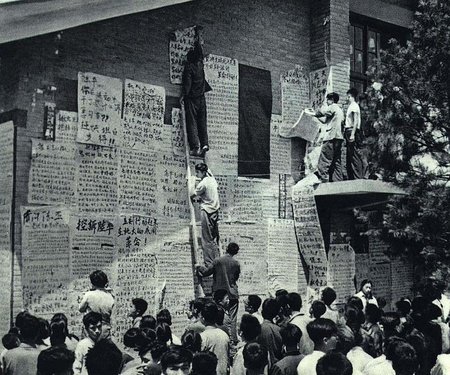
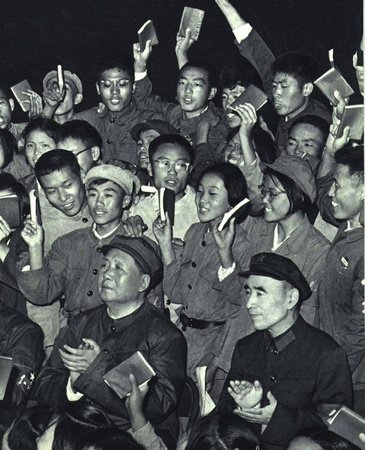
At the Red Guard rallies, Lin Biao also called for the destruction of the "Four Olds": namely, old customs, culture, habits, and ideas. A revolutionary fever swept the country by storm. The Red Guards destroyed historical sites and treasures, burnt historical texts and library books, looted, vandalised and destroyed temples, churches, mosques and cemeteries, such as the Temple of Confucius and the Ming Emperor Tombs etc.
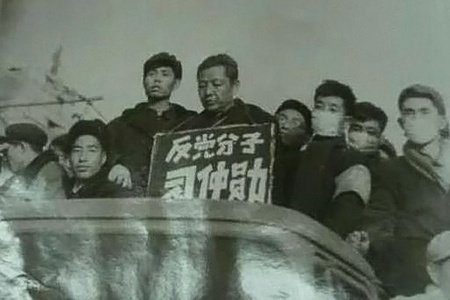
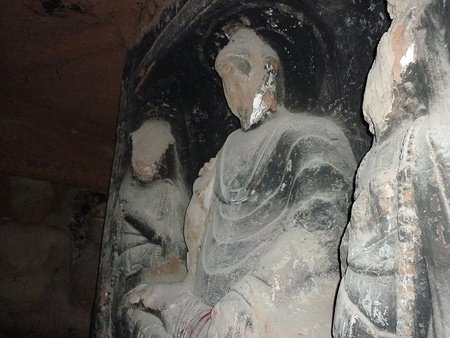
Teachers, party officials, intellectuals, and anyone in power could be attacked. Sick or injured people could not receive medical treatment because all the doctors had been purged. People had to carry two or three copies of the Little Red Book in public to avoid attacks.
The country fell into anarchy with no functioning governments by this time and no public services. Revolutionary committees took over the purged city governments, but they had no idea of how to govern and soon came into conflict with even more extreme youths. The Red Guards split into factions and fought each other in the streets. Amongst all these, Mao's personality cult reached feverish pitch and Mao was glorified to a godlike status.
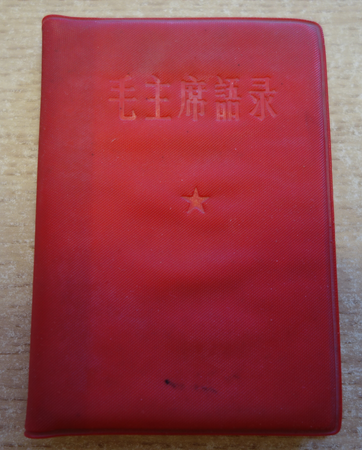
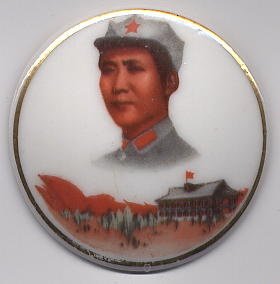
Radical activity subsided by 1969. Lin Biao, who had de facto control over the military, became increasingly at odds with Mao over the idea of power sharing. They split in 1970 over the issues of abolishing the role of the president (left vacant since the removal of Liu Shaoqi) and establishing diplomatic tie with the United States. In September 1971, Lin and his family tried to flee to the Soviet Union after a failed coup attempt to assassinate Mao, but his plane crashed over the sky of Mongolia, allegedly shot down by the Chinese.


Mao became disillusioned after the Lin Biao incident and reinstated many officials previously purged, including Deng Xiaoping. Meanwhile, Jiang Qing formed political alliance with the 38-year-old Wang Hongwen, who seemed to gain Mao's favour as a possible successor and was appointed as Vice-Chairman of the party, together with propagandists Zhang Chunqiao and Yao Wenyuan. They were later dubbed the "Gang of Four". They targeted their political opponents, including the failed attempt to defame the popular but ill Premier Zhou Enlai by launching the "Criticise Lin, Criticise Confucius" campaign in 1973.
In January 1976, Zhou Enlai passed away and the Gang of Four started targeting Deng. They successfully convinced the gravely ill Mao to dismiss Deng, but Mao also distanced himself from the Gang of Four and appointed the relatively unknown Hua Guofeng as his successor. On 9 September 1976, Mao Zedong died. On 6 October, with the military backing, the Gang of Four were arrested in a bloodless coup, officially ending the 10 years of turbulence of the Cultural Revolution.
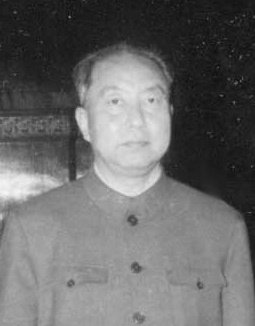
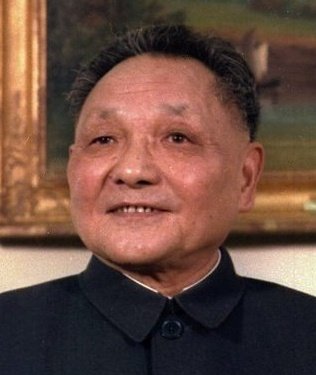
Republic of China (Taiwan) - Chiang era (1945 - 1975)
After World War II, Taiwan was returned to China after 50 years of Japanese rule. However, tension between local Taiwanese and mainlanders increased, and many found that their new ruler was worse than the Japanese. Widespread civil unrest broke out in 1947 and was brutally suppressed by military force in what is now known as the February 28 Incident. This marked the beginning of "White Terror", a KMT-led political repression that resulted in the death or disappearance of over 30,000 Taiwanese intellectuals, activists, and people suspected of opposition to the KMT.
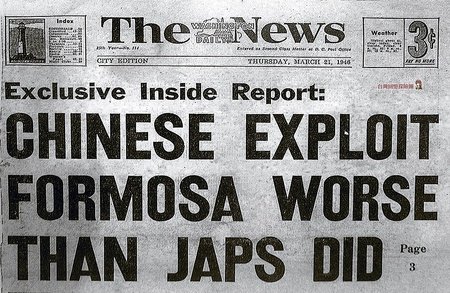
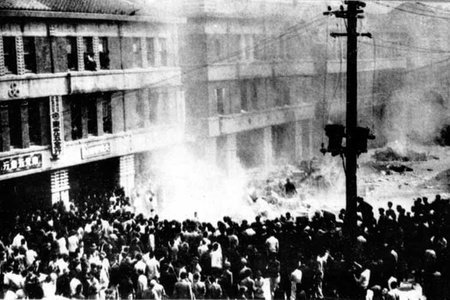
After the mainland fell to the Communist, the KMT was able to fend off the CCP in the Battle of Guningtou on Kinmen island (next to Xiamen island) and stopped its takeover of Taiwan. However, many countries including the United States saw the KMT and Chiang Kai-shek as corrupted and incompetent and deserved losing the civil war. Some were cautiously optimistic that the newly established PRC would be more honest and concerned about its people's welfare. Many expected the eventual Communist invasion of Taiwan and the inevitable fall of the KMT, and the US initially showed no interest in supporting Chiang's government in its final stand. All these were changed dramatically when China entered the Korean War, which ruined any chance of normalising relationship with Washington for years. The US President Harry Truman ordered the US Seventh Fleet to patrol Taiwan Strait and signed the Sino-American Mutual Defence Treaty with the ROC in 1954.
The KMT established martial law in Taiwan from 1948 until 1987, curtailing civil liberty and democracy and ensuring its one-party rule. Around half of the National Assembly delegates elected in 1947 came to Taiwan with the government, and they extended their own terms until "re-election is possible in their original electorates in China". Until the end of 1991, they had been in office for over 43 years.
The last major conflict between the PRC and ROC was the Second Taiwan Strait Crisis in 1958, when the PRC shelled the islands of Kinmen and Matsu as the first step to "liberate Taiwan". The ROC Navy repelled an attempted amphibious landing by the PRC Navy, and the PRC eventually gave up on its blockade and changed the shelling to occur on "odd days only, not even days". This went on until the PRC normalised tie with the US in 1979.
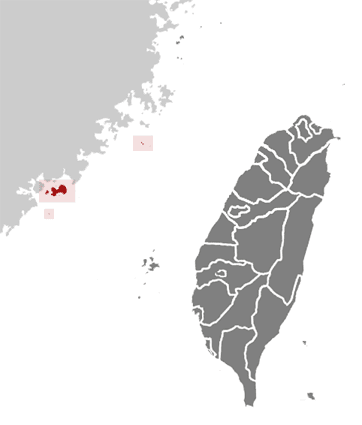
The KMT successfully pushed ahead with land reforms, developed the economy, implemented a democratic system in a lower level of the government and created the Taiwan economic miracle. However, losing the UN seat in 1971 was a major blow to ROC international standing, as it claimed to be the sole legitimate ruler for the whole of China rather than just Taiwan. Until his death in 1975, Chiang Kai-shek insisted that he would live to rule over the mainland once again.
The end of the tenth blog
This is another long blog and it took me some time to write up. I already omitted many other important events, such as the standardisation of Mandarin and introduction of Simplified Chinese in the 1950s, Tibetan uprising in 1959, the Sino-Indian War in 1962, the Soviet Union border war in 1969, Richard Nixon's visit to China in 1972, the Banqiao Dam failure in 1975, and the Tangshan earthquake in 1976. If you are interested to learn more about these then follow the links.
Many events during this period now sound very absurd and ridiculous, but bear in mind that all these happened really not that long ago. Many Red Guards during the Cultural Revolution are still alive today in their 60s and 70s, so you can imagine the enormous upheaval in their lives since then. To many mainland Chinese, Mao Zedong is still held in very high regard. The Communist Party is careful not to put much blame on Mao for the disaster he caused, in a way not too different from the Republican's attitude towards Donald Trump.
The Great Leap Forward and Cultural Revolution are now taboo subjects and usually brushed aside in mainland China. Meanwhile in Taiwan, with its independence mindset nowadays, people would care less about the history of its "western neighbour". And in Hong Kong, under the threat of the National Security Law, self-censorship is now rife and people would avoid getting into trouble by openly discussing these historical events. Therefore there is now a real risk that these important histories and lessons will be forgotten and revised, and the history may repeat itself (which is already happening with the Xi Jinping cult).
In the next and final blog, I will go through the most recent events in China (and Taiwan) since 1976, and discuss how all these histories have shaped the current and future events. So stay tuned and thank you for reading.

By the way, the "2 bombs 1 satellite" were largely developed by overseas Chinese scientists returning to the country in the hope of nation building. However most of them suffered badly and were tortured to death during the Cultural Revolution. Few lucky ones were protected by Premier Zhou Enlai and escaped the turmoils.